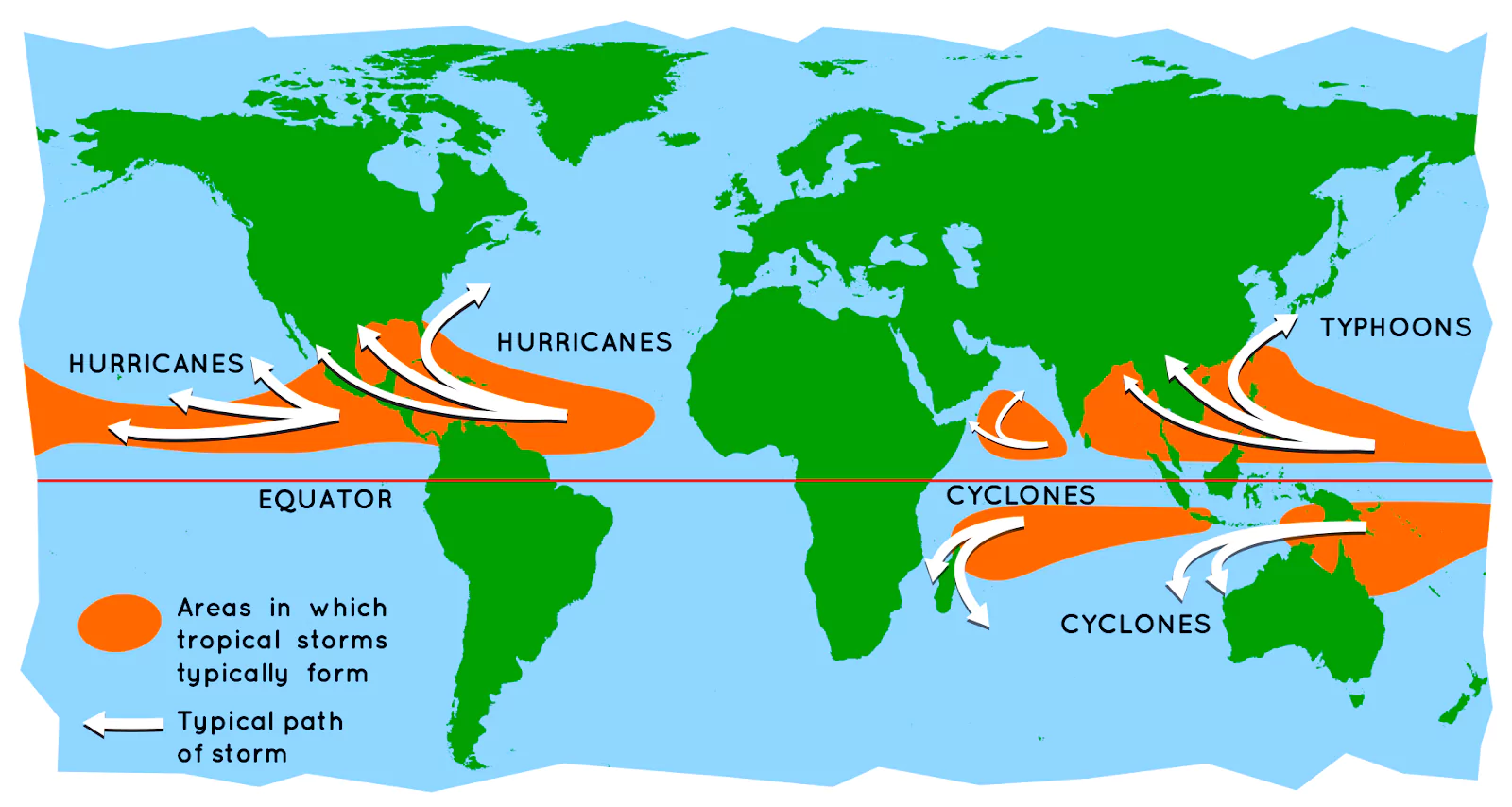The Indian Men’s cricket team remains stranded in Barbados following the T20 World Cup win due to Hurricane Beryl, currently surging through the Windward Islands.
- The hurricane has led to the closure of the Grantley Adams International Airport in Barbados and stalled all flight services indefinitely.
About Hurricane Beryl
It is the earliest category 4 storm – sustaining winds of at least 130 miles per hour (209 kilometres per hour) – to mark the beginning of the Atlantic hurricane season this year.
- It is currently surging through the Windward Islands, the southern part of the Lesser Antilles, which form part of the West Indies and comprise Barbados, Grenada and Trinidad and Tobago.
- Beryl is the strongest storm to impact the Windward Islands since Hurricane Ivan in September 2004.
|
Hurricanes and their Formation

- Definition: Hurricanes, also known as tropical cyclones, are powerful storm systems that use warm, moist air as fuel and typically form over warm ocean waters near the equator.
- Parts of a Hurricane:
- Eye: The calm centre of the storm.
- Eye Wall: Surrounds the eye and is where most activity occurs.
- Rain Bands: Extend further out from the eye.
- Formation Process:
- Warm, Moist Air Rising: Warm ocean water heats the air above it, causing the air to rise. As the warm air rises, it creates an area of low air pressure below.
- Air Movement: The surrounding air rushes in to fill the low-pressure area. This new air also heats up and rises, continuing the cycle.
- Cloud Formation: As the warm air rises and cools, the moisture in the air condenses to form clouds.
- System Growth: The system of clouds and winds continues to grow and spin. It is fueled by the heat from the ocean and the water evaporating from its surface.
- Formation of the Eye: As the storm system rotates faster, an eye forms in the centre. The eye is characterised by calm weather and low pressure.
- Rotation Direction: The rotation of the Hurricanes is due to the Coriolis effect, caused by the Earth’s rotation.
- Storms in the Northern Hemisphere rotate counterclockwise.
- Storms in the Southern Hemisphere rotate clockwise.
- Main Threats due to Hurricanes:
- Storm Surge: An abnormal rise of water generated by a storm.
- Inland Flooding: Flooding that occurs inland due to heavy rainfall.
Enroll now for UPSC Online Classes
The Severity of Hurricanes and Recent Findings
- Weakening After Landfall: Hurricanes typically weaken after making landfall because they are cut off from the ocean’s moisture, which fuels them.
- Recent Research Findings:
- A study published in ‘Nature’ suggests that hurricanes are decaying more slowly in a warming world.
- Reason: Warmer sea surface temperatures induce a slower decay by increasing the amount of moisture that a hurricane carries with it as it hits the land.
- Example- Last week, the National Hurricane Centre (NHC) noted that subtropical storm Theta, in the Northeast Atlantic, became the 29th named storm of the 2020 Atlantic Hurricane season. This beats the record for the most named storms previously held by the 2005 hurricane season.
Difference between a hurricane and a tropical storm
- Terminology based on Location: There is no difference. As per NASA, the scientific name for all these kinds of storms is tropical cyclones.
- Hurricanes may be called typhoons or cyclones depending on where they occur:
-
- Hurricanes in the Atlantic and eastern Pacific.
- Typhoons in the Northwest Pacific.
- Cyclones in the Indian Ocean and South Pacific.
- Tropical storms that form in the Bay of Bengal or the Arabian Sea are called cyclones.
![]() 2 Jul 2024
2 Jul 2024

